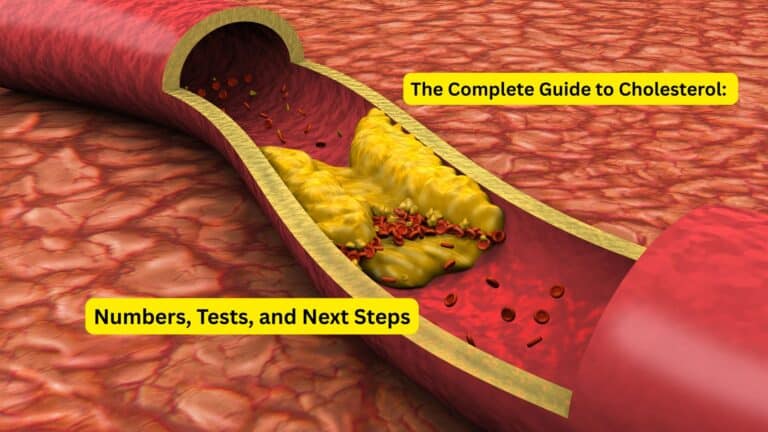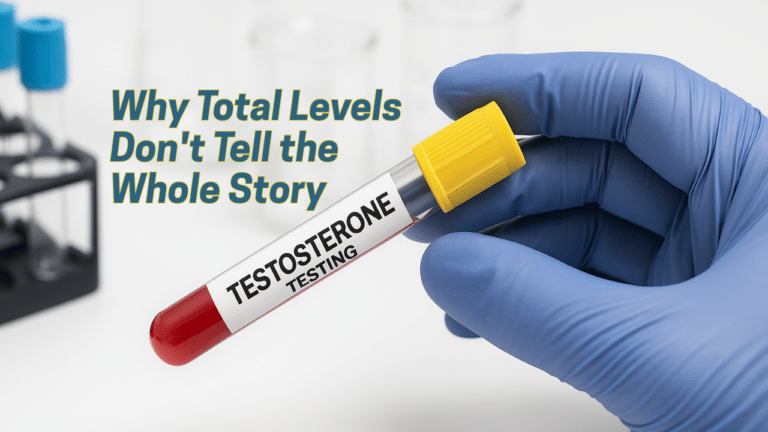Blood pressure represents one of the most important vital signs for assessing cardiovascular health, yet many people don’t fully understand what their numbers actually mean. Measured as two values—systolic and diastolic pressure—blood pressure indicates the force your blood exerts against artery walls as your heart pumps it throughout your body. Think of blood pressure like water pressure in a garden hose: too little pressure means inadequate flow, while excessive pressure can damage the entire system over time.
Understanding your blood pressure readings becomes crucial because hypertension often develops silently, earning its reputation as the “silent killer” with no obvious symptoms until serious complications arise. This comprehensive guide will help you interpret your blood pressure numbers, understand why regular monitoring matters for your long-term health, and discover how accessible testing through Walk-In Lab can provide a complete picture of your cardiovascular risk profile.
Understanding Blood Pressure Numbers
Blood pressure measurements provide critical insight into your cardiovascular system’s health, but interpreting these numbers correctly requires understanding what each component represents and how they work together. The relationship between systolic and diastolic readings reveals important information about your heart’s efficiency and your arteries’ condition. These numbers serve as an early warning system for potential cardiovascular problems that may develop years before symptoms appear.
Systolic vs. Diastolic
Systolic pressure, the higher number in your blood pressure reading, measures the force exerted against artery walls when your heart muscle contracts and pumps blood into circulation. This peak pressure occurs during the heart’s most active phase and typically represents the maximum stress placed on your cardiovascular system with each heartbeat. Diastolic pressure, the lower number, measures arterial pressure during the brief rest period between heartbeats when the heart muscle relaxes and refills with blood.
Both numbers matter significantly for your health, though they may indicate different types of cardiovascular risk. Home blood pressure monitoring provides more accurate predictions of cardiovascular events than occasional office readings, making it essential to understand what normal variations might mean for your individual situation.
While systolic pressure often receives more attention due to its association with heart attack risk, diastolic pressure indicates how well your arteries maintain blood flow between heartbeats. Elevated diastolic pressure can signal increased arterial stiffness or resistance, while very low diastolic readings might suggest weakened heart muscle or other circulation problems.
Categories of Blood Pressure
Medical professionals classify blood pressure readings into distinct categories that help determine appropriate treatment and monitoring strategies. Normal blood pressure registers below 120/80 mmHg, indicating optimal cardiovascular function with minimal disease risk from blood pressure alone.
Elevated blood pressure falls between 120-129 systolic and less than 80 diastolic, representing a warning stage where lifestyle modifications can often prevent progression to hypertension. Stage 1 hypertension includes readings from 130-139 systolic or 80-89 diastolic, typically requiring both lifestyle changes and possible medication intervention.
Stage 2 hypertension encompasses readings of 140/90 mmHg or higher, usually necessitating immediate medical treatment with medications alongside aggressive lifestyle modifications. Hypertensive crisis occurs when readings exceed 180/120 mmHg, requiring emergency medical attention as this level poses immediate risks of stroke, heart attack, or organ damage.
Understanding these categories helps individuals recognize when their blood pressure readings warrant concern and medical consultation, enabling proactive management before complications develop.
Why Blood Pressure Matters
High blood pressure poses significant health risks precisely because it typically develops without warning signs while steadily damaging vital organs throughout the body. The cardiovascular system experiences continuous stress from elevated pressure, leading to progressive changes that increase the likelihood of life-threatening events. Understanding these risks empowers individuals to take blood pressure management seriously, even when they feel perfectly healthy.
The silent nature of hypertension makes it particularly dangerous, as nearly half of U.S. adults have high blood pressure or take medication to control it, yet many remain unaware of their condition until serious complications occur. Unlike conditions that cause immediate discomfort, high blood pressure can persist for years while gradually weakening the heart, damaging arteries, and affecting kidney function.
Uncontrolled hypertension significantly increases the risk of coronary artery disease, as elevated pressure accelerates the formation of arterial plaque and makes existing deposits more likely to rupture and cause heart attacks. The constant high pressure also forces the heart to work harder, potentially leading to heart muscle thickening, reduced pumping efficiency, and eventual heart failure.
Stroke risk rises dramatically with blood pressure elevation, as damaged arteries become more prone to blockages or ruptures that cut off blood supply to brain tissue. Kidney disease represents another serious complication, since these organs rely on precise blood flow regulation to filter waste effectively, and sustained high pressure can permanently damage the delicate filtering structures.
Long-term damage from uncontrolled high blood pressure extends beyond the cardiovascular system to affect vision, cognitive function, and overall quality of life. Retinal blood vessel damage can lead to vision problems or blindness, while reduced blood flow to the brain may contribute to dementia development. These wide-ranging effects emphasize why blood pressure control should be considered a fundamental aspect of preventive healthcare.
Monitoring Blood Pressure
Effective blood pressure management requires consistent, accurate monitoring that provides a complete picture of your cardiovascular status throughout different times and situations. Modern monitoring approaches offer various options that can accommodate individual preferences, lifestyle factors, and specific medical needs. The key lies in choosing monitoring methods that provide reliable data while fitting seamlessly into your daily routine.
Office vs. Home Monitoring
Traditional office blood pressure measurements, while important for medical evaluations, may not accurately reflect your typical readings due to factors like anxiety, physical activity before the appointment, or the clinical environment itself. “White coat hypertension” occurs when blood pressure readings are elevated only in medical settings, while “masked hypertension” involves normal office readings despite elevated pressures at home.
Home monitoring correlates more closely with actual cardiovascular event risk than office measurements alone, making it an invaluable tool for both diagnosis and ongoing management. Home readings eliminate many external factors that can artificially elevate or mask true blood pressure levels, providing healthcare providers with more reliable data for treatment decisions.
Consistent home monitoring also enables individuals to observe how their blood pressure responds to lifestyle changes, stress levels, medication timing, and other variables. This increased awareness often motivates better adherence to treatment recommendations and helps people understand the direct relationship between their choices and their health outcomes.
Ambulatory Monitoring
Twenty-four-hour ambulatory blood pressure monitoring provides the most comprehensive assessment of blood pressure patterns by recording readings automatically throughout normal daily activities and sleep periods. This detailed monitoring can diagnose both masked and white-coat hypertension that might be missed with standard office or home measurements alone.
Ambulatory monitoring reveals important information about blood pressure variability, nocturnal patterns, and morning surges that can indicate increased cardiovascular risk even when average readings appear normal. Some individuals experience dangerous blood pressure spikes during sleep or upon waking that wouldn’t be detected through conventional monitoring methods.
This comprehensive approach proves particularly valuable for people with borderline readings, suspected medication resistance, or symptoms that don’t correlate with standard blood pressure measurements. The detailed data helps healthcare providers optimize treatment timing and medication selection for maximum effectiveness.
Self-Monitoring Benefits
Regular self-monitoring empowers individuals to take active roles in their health management while providing valuable feedback on the effectiveness of their treatment strategies. Self-monitoring encourages timely lifestyle and medication adjustments that can prevent complications and improve long-term outcomes.
The convenience of home monitoring eliminates barriers like scheduling appointments, travel time, and waiting room delays that might otherwise prevent regular blood pressure assessment. This accessibility becomes particularly important for people with mobility limitations, busy schedules, or limited access to healthcare facilities.
Home monitoring also helps people develop better understanding of factors that influence their blood pressure, such as stress, diet, exercise, sleep quality, and medication timing. This awareness enables more informed discussions with healthcare providers and supports collaborative development of personalized management strategies.
Risk Factors and Lifestyle Impact
Blood pressure levels result from complex interactions between genetic predisposition, lifestyle choices, environmental factors, and underlying health conditions. Understanding these various influences helps individuals identify their personal risk factors and develop targeted strategies for prevention and management. While some risk factors cannot be changed, many lifestyle-related factors offer significant opportunities for blood pressure improvement through conscious choices and behavioral modifications.
Who Is at Risk
Age represents one of the strongest predictors of blood pressure elevation, with risk increasing significantly after age 45 for men and 55 for women as arteries naturally become less flexible over time. Family history also plays a crucial role, as genetic factors influence how the body regulates blood pressure, processes sodium, and responds to stress.
Race and ethnicity affect blood pressure risk, with African Americans experiencing higher rates of hypertension and more severe complications compared to other groups. Gender differences become apparent as men typically develop high blood pressure earlier in life, while women’s risk increases substantially after menopause when protective estrogen levels decline.
Existing medical conditions dramatically increase blood pressure risk, particularly diabetes, kidney disease, sleep apnea, and thyroid disorders. These conditions create physiological stress that can elevate blood pressure through multiple pathways, making comprehensive health management essential for cardiovascular protection.
Lifestyle Influences
Dietary choices profoundly impact blood pressure levels, with excessive sodium intake being one of the most significant modifiable risk factors. The typical American diet contains far more sodium than recommended, primarily from processed foods, restaurant meals, and added salt during cooking or at the table.
Weight status strongly correlates with blood pressure, as excess body weight requires the heart to pump harder to supply blood to additional tissue. Abdominal weight distribution poses particular risks, as visceral fat produces hormones and inflammatory substances that can elevate blood pressure and insulin resistance.
Physical activity levels significantly influence cardiovascular health, with sedentary lifestyles contributing to higher blood pressure, weaker heart muscle, and increased risk of obesity and diabetes. Regular exercise helps strengthen the heart, improve circulation, and reduce stress hormone levels that can elevate blood pressure.
Smoking and excessive alcohol consumption both contribute to blood pressure elevation through different mechanisms. Smoking damages blood vessels and increases arterial stiffness, while excessive alcohol intake can disrupt sleep patterns, contribute to weight gain, and directly affect heart rhythm and blood pressure regulation.
Emerging Research
Recent studies have identified blood pressure variability as an independent risk factor for cardiovascular events, beyond average blood pressure levels. People with highly variable readings may face increased risks even when their average blood pressure appears well-controlled, suggesting the importance of consistent rather than just low readings.
Chronic stress and mental health conditions are receiving increased attention as blood pressure risk factors, with research showing that prolonged psychological stress can lead to sustained blood pressure elevation through hormonal pathways and behavioral changes like poor diet and decreased physical activity.
Sleep quality and duration also influence blood pressure regulation, with both insufficient sleep and sleep disorders like sleep apnea contributing to hypertension development. Poor sleep affects hormone balance, increases inflammation, and can disrupt the normal nocturnal blood pressure reduction that helps protect cardiovascular health.
Practical Steps for Management
Effective blood pressure management requires a comprehensive approach that addresses lifestyle factors while incorporating appropriate medical monitoring and intervention when necessary. The most successful strategies combine evidence-based lifestyle modifications with regular assessment of cardiovascular risk factors through comprehensive testing. These practical steps can significantly reduce blood pressure levels and associated health risks when implemented consistently over time.
Adopting a heart-healthy diet forms the foundation of blood pressure management, with the DASH (Dietary Approaches to Stop Hypertension) and Mediterranean eating patterns demonstrating particular effectiveness. These approaches emphasize fruits, vegetables, whole grains, lean proteins, and healthy fats while limiting processed foods, excessive sodium, and added sugars that contribute to blood pressure elevation.
Reducing sodium intake often produces rapid improvements in blood pressure levels, with many people experiencing noticeable changes within weeks of cutting back on processed foods and restaurant meals. Reading nutrition labels becomes essential, as sodium hides in unexpected places like breads, condiments, and canned goods that may not taste particularly salty.
Maintaining a healthy weight through balanced nutrition and regular physical activity provides multiple cardiovascular benefits beyond blood pressure reduction. Even modest weight loss of 5-10 pounds can produce meaningful blood pressure improvements, while sustained weight management helps prevent future increases and reduces medication needs.
Regular physical activity strengthens the heart muscle, improves circulation, and helps manage stress levels that contribute to blood pressure elevation. Both aerobic exercise and resistance training offer benefits, with consistency being more important than intensity for most people beginning an exercise program.
Stress management techniques like meditation, deep breathing exercises, yoga, or counseling can help reduce the physiological impact of chronic stress on blood pressure. Finding healthy coping strategies becomes particularly important for people whose work or personal situations involve ongoing stress that cannot be completely eliminated.
Using Walk-In Lab’s comprehensive cardiovascular and metabolic testing panels provides valuable insights that extend beyond blood pressure monitoring alone. Cholesterol levels, blood sugar, inflammatory markers, and other cardiovascular risk factors work together to determine overall heart disease risk, enabling more targeted prevention strategies.
Regular testing allows individuals to track their progress as they implement lifestyle changes and provides objective feedback on the effectiveness of their efforts. This monitoring capability becomes especially valuable for people taking medications, as it helps healthcare providers optimize treatment approaches based on comprehensive risk assessment rather than blood pressure alone.
FAQs
What do my blood pressure numbers mean?
Blood pressure readings consist of two numbers: systolic pressure (top number) measures the force when your heart beats, while diastolic pressure (bottom number) measures the force when your heart rests between beats. Normal blood pressure is less than 120/80 mmHg. Readings between 120-129 systolic with diastolic under 80 are considered elevated, while 130/80 mmHg or higher indicates hypertension requiring medical attention.
How often should I check my blood pressure?
Checking frequency depends on your current readings and risk factors. People with normal blood pressure should check at least annually, while those with elevated readings or hypertension may need daily or weekly monitoring. If you’re starting new medications or making lifestyle changes, more frequent monitoring helps track progress and ensures safety.
What are the risks of high blood pressure?
Untreated high blood pressure significantly increases risks of heart attack, stroke, heart failure, kidney disease, vision problems, and cognitive decline. Because hypertension often causes no symptoms, many people don’t realize they’re at risk until serious complications develop. The continuous high pressure damages arteries and organs throughout the body over time.
Can lifestyle changes lower my blood pressure?
Yes, lifestyle modifications can produce substantial blood pressure reductions, sometimes eliminating the need for medications. Effective changes include adopting a heart-healthy diet (like DASH or Mediterranean patterns), reducing sodium intake, maintaining healthy weight, exercising regularly, managing stress, limiting alcohol, and not smoking. Many people see improvements within weeks of making these changes.
What’s the difference between home and ambulatory blood pressure monitoring?
Home monitoring involves taking readings at home using a personal blood pressure device, typically once or twice daily. Ambulatory monitoring uses a portable device that automatically records readings every 15-30 minutes over 24 hours during normal activities. Ambulatory monitoring provides more comprehensive data and can detect masked hypertension or white-coat hypertension that home and office readings might miss.
Conclusion
Understanding your blood pressure numbers represents a critical step toward protecting your long-term cardiovascular health and preventing serious complications that can develop silently over years. The relationship between systolic and diastolic readings, combined with consistent monitoring patterns, provides valuable insights into your heart’s efficiency and your arteries’ condition that can guide both lifestyle choices and medical treatment decisions.
Regular blood pressure monitoring, whether at home or through professional assessments, empowers you to detect changes early and take proactive steps before problems become serious. The convenience of home monitoring, combined with comprehensive cardiovascular risk assessment through laboratory testing, creates a powerful prevention strategy that can significantly reduce your risk of heart disease, stroke, and other complications.
Knowledge alone isn’t enough—taking action on what your numbers reveal makes the difference between passive hope and active health management. Don’t wait for symptoms to appear before assessing your cardiovascular risk profile.
Order your Heart Health Test Panel with Walk-In Lab today to get a complete picture of your cardiovascular health, including cholesterol levels, blood sugar, and other important markers that work together with blood pressure to determine your overall risk. Your heart health deserves the investment in comprehensive monitoring and prevention.
This article is for informational purposes only and does not constitute medical advice. Always consult with healthcare professionals for personalized medical guidance and treatment recommendations.






